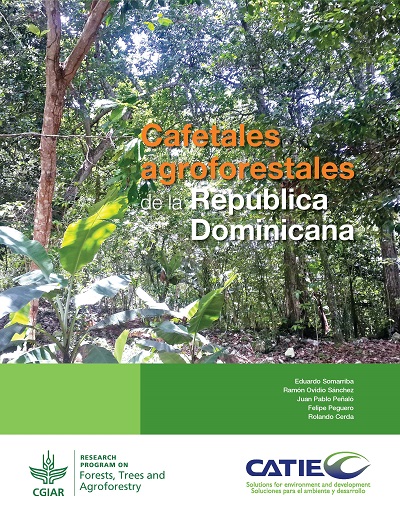Cafetales agroforestales de la República Dominicana
Abstract
This study of 400 coffee plantations in the Dominican Republic determined the main characteristics of the coffee plantations, the typical sizes of the plantations, the most cultivated coffee varieties, the botanical and productive composition of the shade canopy, the production and destination of the agroforestry products and the preferences of the producers in an eventual process of renovation and rehabilitation of the coffee plantations. The results show that the coffee plantations are small, with a shade canopy of the coffee-guava-banana-fruit tree type, with a diversified agroforestry production destined for sale and self-consumption. The great majority of the producers are interested in renewing their coffee plantations in a staggered manner over a period of 3 to 5 years. Plants selected on the farm for their resistance to rust, such as Catimores and Sarchimores, are the preferred genotypes and varieties to establish in the new coffee plantations, which are associated with beans and yautía in the establishment phase and with shade (guama or amapola) and fruit trees (banana, avocado, orange and sour orange) as permanent shade. The farmers' expert knowledge allowed the construction of mathematical functions that describe the relationships between yield and age of coffee, avocado, banana, orange and sour orange, as well as indications of the planting densities of these species in new renovated coffee plantations. This information is useful for the design of coffee plantations that are acceptable to producers in the renovation programs of the country's coffee plantations.

